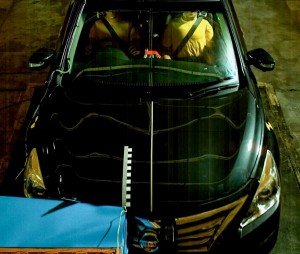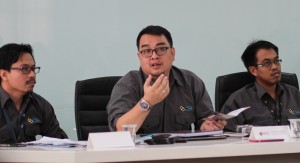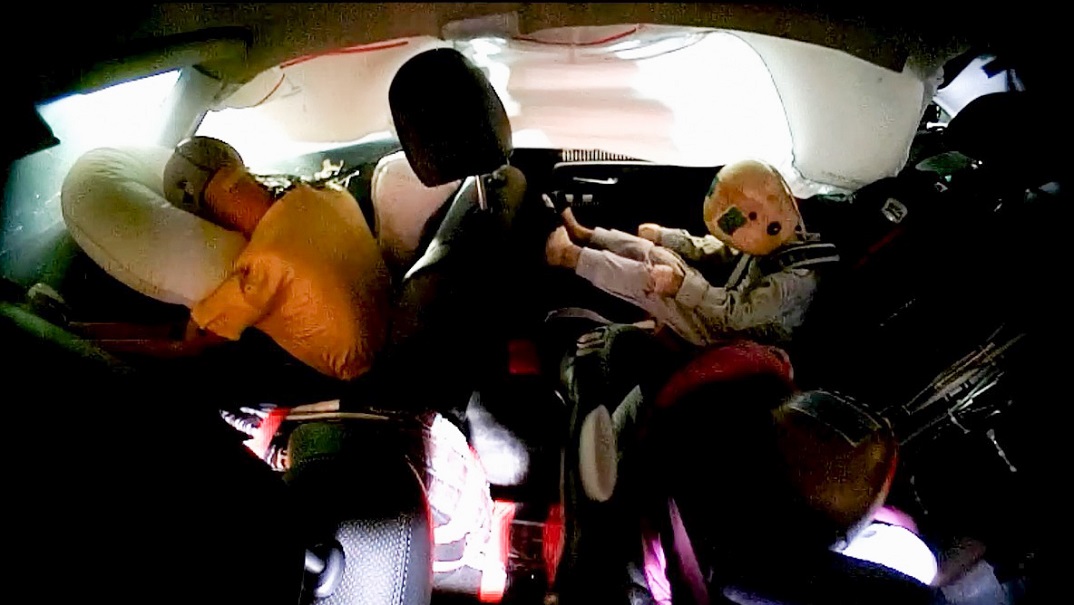 Last week, ASEAN NCAP published a curtly worded release on its website stating that they have received complaints from customers that a particular safety feature (the top tether for child seat attachment) was removed on a “locally made car” that ASEAN NCAP had previously crash tested. While no brand was named, both Perodua and Proton promptly issued their own releases confirming that all their cars comply with safety regulations. What does that mean?
Last week, ASEAN NCAP published a curtly worded release on its website stating that they have received complaints from customers that a particular safety feature (the top tether for child seat attachment) was removed on a “locally made car” that ASEAN NCAP had previously crash tested. While no brand was named, both Perodua and Proton promptly issued their own releases confirming that all their cars comply with safety regulations. What does that mean?
In a recent media session jointly organised by ASEAN NCAP and the official distributors of Nissan vehicles in Malaysia, Edaran Tan Chong Motor, we had the opportunity to meet with the people who runs ASEAN NCAP, and to better grasp the role of this organisation.
You might have heard of NCAP (for New Car Assessment Program), maybe seen some crash videos. But let’s first clear up a common misconception: it isn’t a regulating body for vehicle safety, nor does it have statutory powers to fine or compel a car company to act, something that still rests with governments.
Global NCAP was founded as a non-profit organisation (based in the United Kingdom) with the objective to promote safety through the assessment of safety performance in motor vehicles, it then presents the test results in plain language to the public. Regulations governing vehicle safety are not for the faint-hearted. While many nations (including Malaysia) have banded together to commit to a set of harmonised rules commonly referred to as UNECE (United Nations Economic Commission for Europe), they are wide-ranging (beyond just safety), complex and near impossible to comprehend unless you’re an expert of the trade.
This is where Global NCAP comes in, it promotes the setting up of local or regional NCAPs, particularly in emerging markets where the sales growth of new vehicles is strong, where awareness of vehicular safety is perhaps not as high as developed nations. It is in against this backdrop that ASEAN NCAP was formed in late 2011 – a collaboration between the Malaysian Institute of Road Safety Research (MIROS) and Global NCAP – focusing on the evaluation of passive safety aspects of vehicles (i.e. how well a car protects its occupants in the event of a crash) sold within the ASEAN region.

In the longer term, ASEAN NCAP is working towards acquiring the capabilities to conduct tests on active safety features such as electronic stability control, active braking and lane keeping assistance which are already tested under Euro NCAP.
- Who pays the bills?
The programmes of ASEAN NCAP is primarily undertaken by MIROS, an agency established under the Ministry of Transport to serve as a research institute and repository of information on road safety. The funding of ASEAN NCAP-related activities comes mainly from Global NCAP, itself a recipient of funding from the FIA (or the International Automobile Federation) Foundation and Bloomberg Philanthropies.
ASEAN NCAP published its first set of crash test results in January 2013, and has since crash tested a total of 40 vehicles. Its test facility located in Malacca was built to Global NCAP standards and is capable of undertaking the frontal offset crash test, though ASEAN NCAP can choose to conduct crash tests at other regional NCAP facilities such as those in Japan and Australia. From the frontal crash test, two different scores/ratings are then apportioned to each car based on Adult Occupant Protection (AOP) and Child Occupant Protection (COP).
ASEAN NCAP aims to introduce the side impact crash test as well as apportion 25% of the rating system to safety assist technology by 2017, currently it relies on manufacturers to produce the UNECE R95 side impact test report in order to qualify for a 4-star or above rating, that is assuming the frontal test scores rank at or above four stars to begin with. The presence of electronic stability control and seat belt warning is also required if a high-scoring vehicle is to receive the full 5-star rating.
- How are cars selected?

Vehicles are selected based on categories, e.g. MPV, SUV or small hatchbacks, with the tests carried out over different phases. ASEAN NCAP will either purchase the test vehicles or receive the earmarked models from car manufacturers who are willing to provide the vehicles voluntarily. To ensure that the cars hailing from manufacturers are not “specially prepared”, the test units are randomly selected by ASEAN NCAP from a list of vehicle identification numbers provided by the car makers.
Manufacturers are also encouraged to submit their cars on a voluntary basis to undergo crash test; one of the models that took up the challenge was the Nissan Teana. Granted that a good score was always on the cards as the Teana comes fitted with six airbags and electronic stability control as standard across all variants, theperfect score it achieved in AOP (16 out of 16 points) along with the highest ever score in COP (88%) was an unexpected surprise for both Nissan and ASEAN NCAP according to its Secretary General, Khairil Anwar Abu Kassim. Put it simply, a wrecked car never looked this beautiful.
- Should ASEAN NCAP matter to you?
If you’re reading this on a smartphone while driving, if you think putting on seat belts is an annoyance, or that it’s actually fun to let a young child ride on your lap while seated upfront, then no amount of crash testing will matter to you. We wish you good luck and hope that you do not cause any harm to other motorists.
Without proper restraints, one can only imagine the carnage that accompanies a head-on impact at only 64km/h (screen grab from Nissan Teana undergoing ASEAN NCAP frontal crash test)
But if you’re the car owner who recognises the risks associated with the act of travelling in a car, then the information painstakingly compiled by ASEAN NCAP though its crash test programme can assist you in picking a safer vehicle for you and/or your family. While ASEAN NCAP has no statutory powers to fine or compel car companies to act, it will publish test scores with no fear or favour, and highlight safety related misdeeds by car companies. As a consumer, you can only benefit from that.
ASEAN NCAP will be holding a Child Safety Day on 11th November 2015 highlighting the effectiveness of Child Restraint Systems in mitigating fatal injuries in accidents. The location of the event is at Autoliv Hirotako Safety Sdn. Bhd. at Balakong, Selangor. Admission is by invitation only, if you’re interested, please get in touch with Salina Mustaffa, ASEAN NCAP’s communications officer, at 03 8924 9200 (extension 425).


